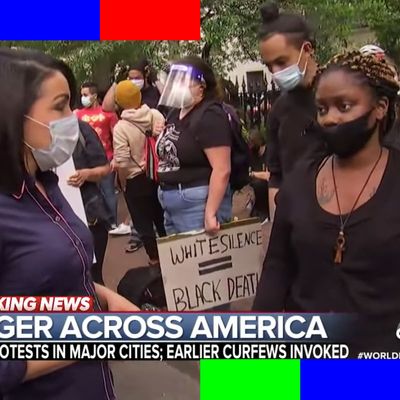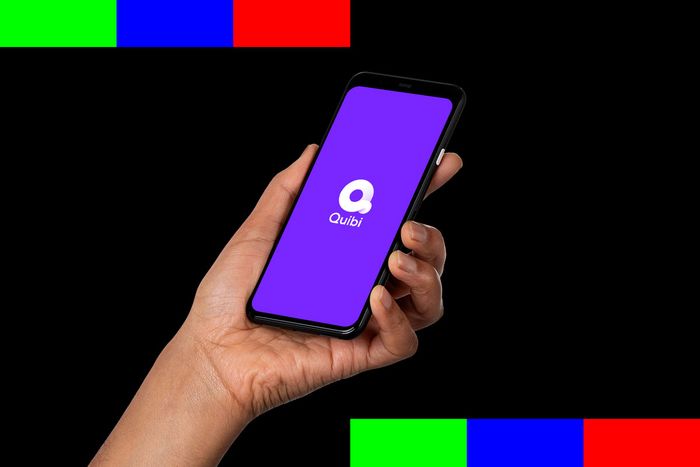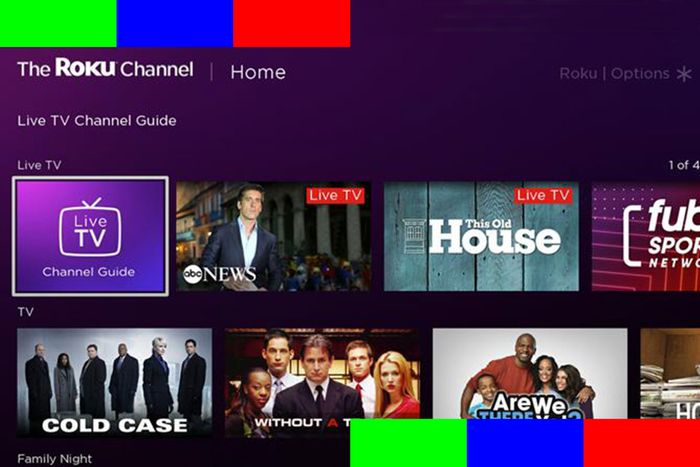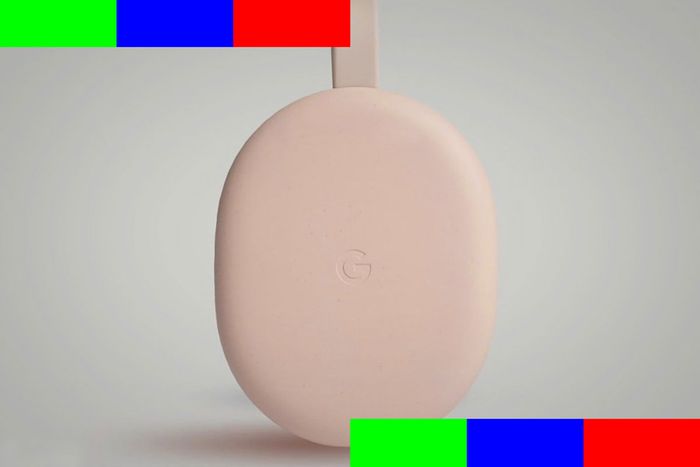
For months, the coronavirus and its effects have dominated just about every aspect of our lives. It hasn’t disappeared, but now the world has turned upside down yet again. The police killing of George Floyd has rightfully sparked global outrage and days of protest, accompanied by local and national government responses which have often underscored why so many have taken to the streets in the first place. This week’s Buffering starts off with a look at how streaming news networks have emerged as valuable resources for anyone looking to go beyond cable news coverage of these times. We’ve also got the latest bad headlines for Quibi, a look at Roku’s big push into live TV, news about Google’s new streaming device, and why HBO Max’s Love Life will wrap up its first season much sooner than expected.
Wall-to-wall coverage of the fallout from last month’s death of George Floyd has resulted in skyrocketing cable news ratings the past few days. CNN on some nights has been the No. 1 network in all of TV (cable and broadcast) among adults under 50; Fox News agitators like Tucker Carlson and Sean Hannity have been dominating with older audiences, drawing upward of 6 million viewers at times — about 50 percent higher than recent norms. These numbers underscore how old-school linear TV remains vital even in the age of cord-cutting.
But the crisis of the past week has also allowed streaming platforms geared toward news (particularly of the local variety) to step up.
When confrontations between police and protesters became particularly tense over the weekend, with dramatic scenes playing out in multiple cities at once, I found myself frequently turning to CBSN, the free CBS News streamer that seamlessly blends a national virtual news network with nearly a dozen local news channels. While CNN might spend a few minutes on the ground in Los Angeles before switching over to the scene in Philadelphia, CBSN has streaming news channels devoted to both cities. I was able to spend an hour watching live coverage from CBS 2 Los Angeles as the situation in the Mid-Wilshire district evolved, then tune in CBS Philly and watch the station’s news chopper fly through the city capturing the scene there. CBSN also has affiliates in Minneapolis (where Floyd was killed) and other big cities which had major protests over the weekend, including Boston, Chicago, and Denver. CBSN also uses the resources of CBS News to cover the unrest across the country on the main CBSN feed, but it’s these local micro-networks which offer an advantage over cable news.
Not surprisingly, CBSN says viewership has spiked dramatically in recent days as audiences sought out coverage of the protests and police response. Compared to year-ago levels, viewership jumped between 700 and 900 percent during the Saturday/Sunday/Monday frame, a CBSN rep said. All three days were among the ten biggest days ever in terms of usage in the platform’s history. The CBSN local market feeds have also been setting usage records, with CBS Minneapolis accounting for 65 percent of all local feed traffic last Thursday.
While CBSN arguably offers the smoothest way to get live, local news coverage, it’s got some competition:
• STIRR, which we’ve written about here before because of its extensive entertainment offerings, carries news programming from dozens of local stations, often including live coverage of events as they unfold. The good and bad news here is that STIRR is owned by Sinclair, which operates nearly 200 stations across the country. It’s (almost) everywhere. But it is also a company controlled by a far-right owner and one which has been accused of forcing its stations to inject right-wing propaganda into its newscasts. That doesn’t mean every affiliate is going to skew events like a mini–Fox News: I saw coverage of this weekend’s events from stations in Seattle and Las Vegas, and it was fine. But, viewer beware.
• ABC News Live and NBC News Now are national streaming news platforms which offer an experience a bit more similar to CNN — a big-picture look at the news from a countrywide perspective. And since both networks own stations in major cities, they’ll often cut to local feeds as news warrants or lean on local reporters to offer perspectives you might not find on a national cable news network. They don’t broadcast live 24/7 or even 18/6 the way a CNN does — but they both cover events ignored or undercovered on bigger platforms, often with far less anchor commentary and more field reports. Earlier this week, for example, NBC News Now presented Can You Hear Us Now?, an excellent panel discussion anchored by MSNBC’s Trymaine Lee which explored being black in America.
• NewsON is an app/streaming platform which lets users access scheduled local newscasts from dozens of stations for free (no authentication needed). Finding live breaking news coverage on the app is harder to do, unless a station happens to be in a scheduled broadcast.
Right now, the streaming news platforms powered by the big broadcast networks are all very much works in progress. Being able to leverage local stations is a powerful tool when there’s a natural disaster like a hurricane or something like what we’ve been seeing play out this week. Not having to worry about hourly ratings like CNN or MSNBC also lets these platforms approach news in a more thoughtful way than cable news — at least in theory. Relying on local news anchors and reporters is a double-edged sword: While many offer insight and context you can’t get from national outlets, local news is also even more attracted to exciting visuals (even if they distort the full picture of a given story) and too reliant on government authorities (who, as we’ve seen of late, are all too willing to distort truth to further a narrative).
What these platforms also lack are big, must-see original programs, or regular showcases for standout talent. There’s no Rachel Maddow or Jake Tapper on the streaming news nets, no show you have to tune in for every day at 7 p.m. Maybe streaming news doesn’t need to have appointment programs or signature stars — that would certainly keep costs down. But I do think that as free, ad-supported streaming continues to grow — filling the role of traditional linear TV — platforms such as CBSN and NBC News Now will start to evolve from being handy utilities to destinations in their own right.
More Troubles for Quibi
The Wall Street Journal says top execs at the struggling streamer have been asked to cut their pay 10 percent in response to (much) slower-than-expected sign-ups. The paper also says Quibi is talking about layoffs, seeming to back up an earlier report about staff cuts in the New York Post (which I won’t link to because it includes some pretty hard-to-believe reporting about how much Reese Witherspoon got for narrating a Quibi show). A Quibi rep tells Buffering that top execs are, in fact, taking a voluntary pay cut, but that there are no plans for cutbacks. She shared an internal memo sent out by Jeffrey Katzenberg and Meg Whitman Wednesday following the “Page Six” report. Here’s a condensed version of the memo:
Good morning–
Many of you have already seen the NY Post’s Page Six story. The story was completely inaccurate. We are pleased with the performance of “Fierce Queens”; additionally, the talent compensation was utterly inaccurate. We are grateful for Reese’s continued support of Quibi….
Nothing has changed since our last company meeting two weeks ago. Quibi is in a good financial position. As we said in that meeting, we will look for ways to tighten our belt. We are not laying off staff as a part of cost saving measures. We’ve recently added a dozen new Quibi employees.
And in regard to tightening our belt, our senior leadership team has volunteered to take a 10% pay cut because it’s the right thing to do.
We are excited about the future. As we shared in our most recent company meeting, the best is yet to come. We are confident in Quibi and the work that you are creating every day.
What’s next: Via email, the Quibi rep also pointed out to me that the service recently ordered second seasons of two unscripted shows (Thanks A Million and Dishmantled), and that it “will announce many more” renewals in “the near future.” The service is clearly pushing back on the narrative that it’s chaos at Quibi simply because user sign-ups have been below expectations. Media and tech commentators have been rushing to declare Quibi dead, almost from the moment it launched. Many simply think people paying for short-form entertainment simply isn’t going to work.
I, too, have been skeptical about the fundamental premise behind the service: Despite a finished product that’s actually pretty impressive — the shows look good; the app is actually kind of beautiful and works well — I just don’t know that there are enough people who want to pay $5 per month for TV shows meant for mobile when there’s already a flood of good-enough short form content that’s free. I mean, I could watch Sarah Cooper and Matt Buechele videos on Twitter all day; TikTok and SnapChat are similarly overflowing with talented folks producing compelling entertainment. Quibi, as good as it is, still needs to demonstrate why it’s worth paying for. Oh, and the clock is ticking: Those generous three-month trials the platform handed out start expiring early next month. Since I turned off auto-renew, I’ve been getting hit over the head with reminders from Quibi warning me I’ll soon lose access to the service.
Is it really doomed? Where I dissent just a bit from the general pessimism on the question of Quibi is here: I don’t think it’s impossible for it to turn things around. The platform isn’t even three months old and, per founder Jeffrey Katzenberg, has enough funding to make new shows for a year or two. Maybe it’s still possible to come up with a new strategy, one less reliant on high-cost scripted shows and subscription revenue, that allows a total Quibi reset. I’m not saying this is likely or even doable at this point — a free Quibi with low-cost content is …YouTube? — but I also don’t see the need to start writing its obituary. Many people declared Oprah Winfrey’s OWN network a lost cause less than a year after its launch. But she and her then-partners at Discovery Networks did a total revamp of the channel, ratings jumped, and in January, OWN will mark its 10th anniversary. Maybe Katzenberg should give Oprah a call.
Roku Ups Its Live TV Game
Roku is the first name in streaming gizmos: It’s now in nearly 40 million homes (up from 30 million a year ago), making it by far the most dominant streaming hardware supplier in the country. But for about two years now, the company has also been a programmer, aggregating content via something called The Roku Channel. It’s a free, ad-supported streaming TV service built into the user interface of every Roku device (and accessible to anyone via the internet). If you don’t want to (or can’t) pay for a half-dozen versions of Netflix, Roku Channel has been a good place to find older TV shows and movies.
This week, Roku Channel got a major upgrade. While Roku Channel has been quietly adding live TV networks for about a year now, the company this week added nearly three dozen more services, including channels with content from some existing brands (A&E, MTV, BET, CMT, and Buzzr) and shows (Family Feud, America’s Got Talent). The additions bring the total number of live offerings on Roku Channel to over 100, which is why the company has also added a cable-like on-screen program guide to help users navigate all the choices. On this front, Roku is playing catch-up: Other apps in the free, ad-supported TV (or FAST) space such as Pluto and Tubi (which you can watch on a Roku, by the way) have long boasted state-of-the-art browsing experiences which let users replicate the lean-back experience of flipping through cable channels.
Much of the content on Roku Channel is available on other FAST services, sometimes in slightly different forms. For example, MTV programs a virtual channel devoted to its old reality shows for Pluto with both the MTV and Pluto branding. (It’s literally called MTV Pluto TV). You might think Roku would be interested in exclusive content, or that ViacomCBS, which owns both MTV and Pluto, wouldn’t want to draw people away from its own Pluto platform. But Ashley Hovey, director of AVOD Growth at Roku, tells me there’s a benefit for both sides. “These brands are looking to be on a platform where they can get the most users … and get in front of audiences,” she says. “We’re also strong in monetizing and surfacing content.” Translation: Because Roku is so big, it’s well-positioned to get eyeballs in front of shows and sell ads against said content.
First impressions: Roku’s live TV guide isn’t available on every device just yet (it’ll roll out over the next few weeks, Hovey says). But my Roku player did get the upgrade on Tuesday, giving me the chance to play around with the new interface. And so far, it’s … pretty good.
The program guide is relatively easy to use, and using a Roku remote, it’s very easy to scroll through channels much the same you would with a cable box. But design-wise, Pluto and Tubi (the free services I use most often) are easier to use and just look better. On the other hand, Roku Channel’s overall channel lineup is notably smaller than what you’ll find on Pluto, which is actually a good thing. Since becoming a part of ViacomCBS, Pluto seems to add three new channels every other day, making scrolling through its guide as frustrating as browsing the endless virtual aisles of Netflix. Roku Channel, at least for now, feels like a bit more of a boutique experience.
Google’s New Streaming Box
As Roku bolsters its content offerings, rival Google appears to be closer to upping its streaming TV hardware game. While the Chromecast dongle and Android TV platforms are both already big players in the battle to connect folks to TV services, Google has always felt like an also-ran in the device wars. While some folks love Chromecast, millions of people have probably been turned off by the fact that it doesn’t come with a remote control; you need to use your phone to select content or change channels. But apparently, this could be about to change.
XDA Developers this week published what it says are images of a new Android TV device that, yes, has a remote control. What’s more, it showed off what appear to be images from a new user interface, one which integrates Google’s YouTube TV platform and its Nest camera products next to the latest shows from Netflix or Hulu. This week’s leak builds off earlier reporting from other outlets, starting with 9to5Google (which scooped news of the remote back in March). None of this has been officially confirmed by Google, but these are all reliable outlets with good track records in breaking news. (Also, my Vox Media colleague Dieter Bohn felt confident enough about this to write about it in this week’s issue of his must-read Processor newsletter, which is how I first heard about it.)
I bought a Chromecast a few years ago when it was on sale for like $20, and then promptly forgot about it. Using my phone as a remote was simply a non-starter. But I am otherwise very invested in Google’s video ecosystem: I love YouTube TV (by far the best live TV platform out there) and have several Google assistant devices. I currently switch between Roku and Apple TV for streaming apps (and would probably use Apple TV more often if its remote weren’t so tiny and useless), but if the new Google TV experience offers an elegant combination of YouTube TV, other Google products, and third-party apps, I’ll probably be buying another streaming box.
HBO Max’s Latest Moves
HBO Max is eight days old and it’s already changing strategy (a little). After first saying the original rom-com series Love Life would roll out one new episode per week (after the first three eps served up at launch), HBO Max has now decided all ten episodes will be available to stream by next week. Episodes four, five, and six landed on the service earlier today; the final four will be released on Thursday, June 11.
Why the shift? An HBO Max press release offered something about audiences loving the show and wanting to reward those early adopters. Given HBO Max’s late 2020 product pipeline has been slowed by the coronavirus-caused production shutdown, I’m a bit surprised at the move, since the original strategy would’ve given Max something new to promote well into July. On the other hand, Max will now be able to sell all of season one to potential subscribers as a binge, which is how most consumers prefer to consume content these days.
Meanwhile, many people still don’t have easy access to Max: Still no word of deals to put HBO Max on the Roku or Amazon Fire TV platforms, per reps for the companies involved. I think Max can survive not being on Amazon for a few months, but the Roku blackout seems a bigger problem. If the service isn’t on Roku within a few more weeks, that could be a serious problem. (Given the laws of journalism deadlines, there’s a better than 50/50 chance that just such a deal will be announced between the time I’m writing this on Thursday morning and the minute this newsletter hits your inbox.)
Parting Shot
“You can’t have it both ways. You can’t circulate dehumanized images of black men and then when they get killed, ‘This is wrong and we are sorry it happened.’”
—Dr. Todd Boyd, professor of critical studies at USC’s School of Cinematic Arts, on why Hollywood execs speaking out against racism isn’t enough.





